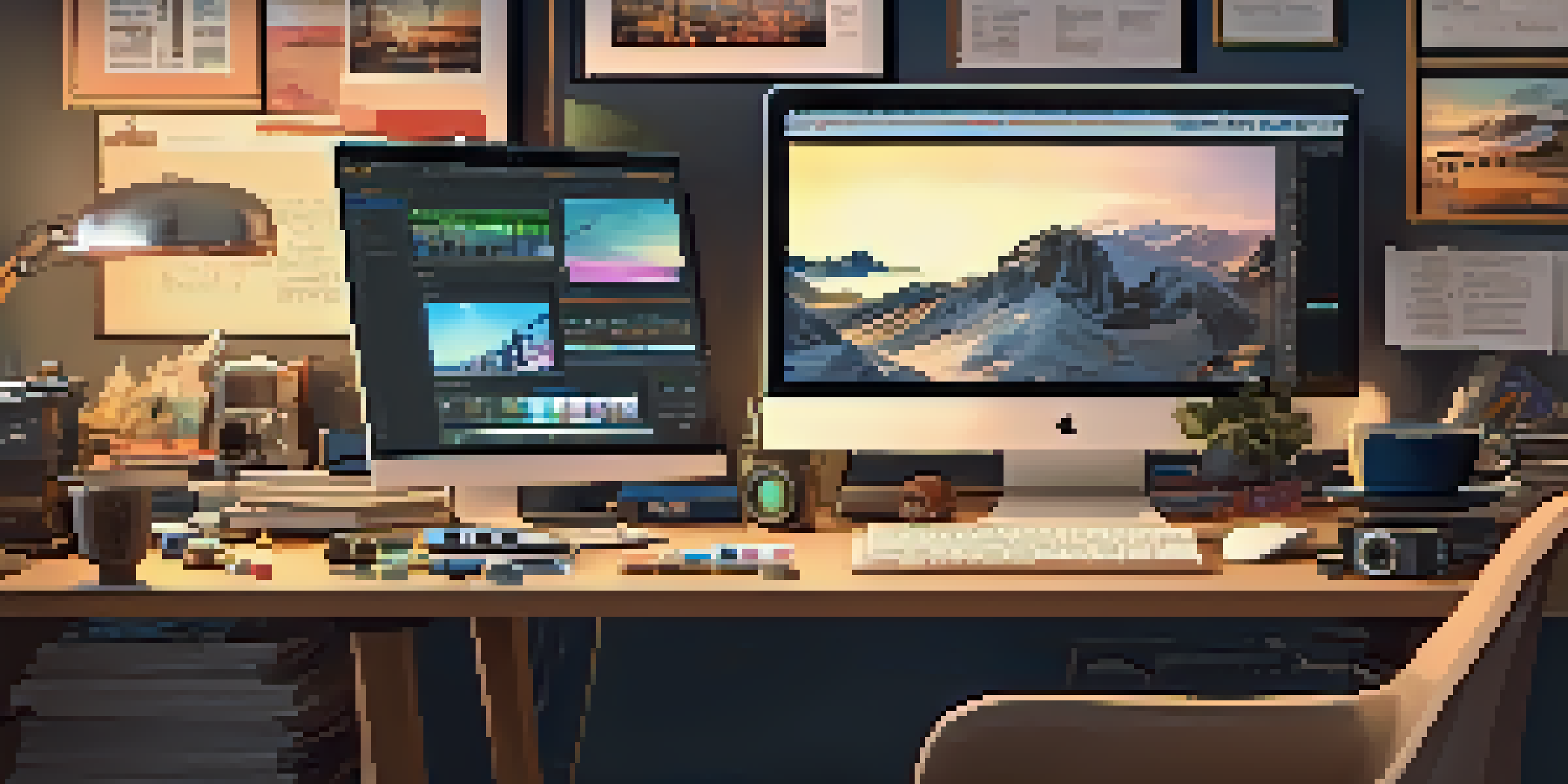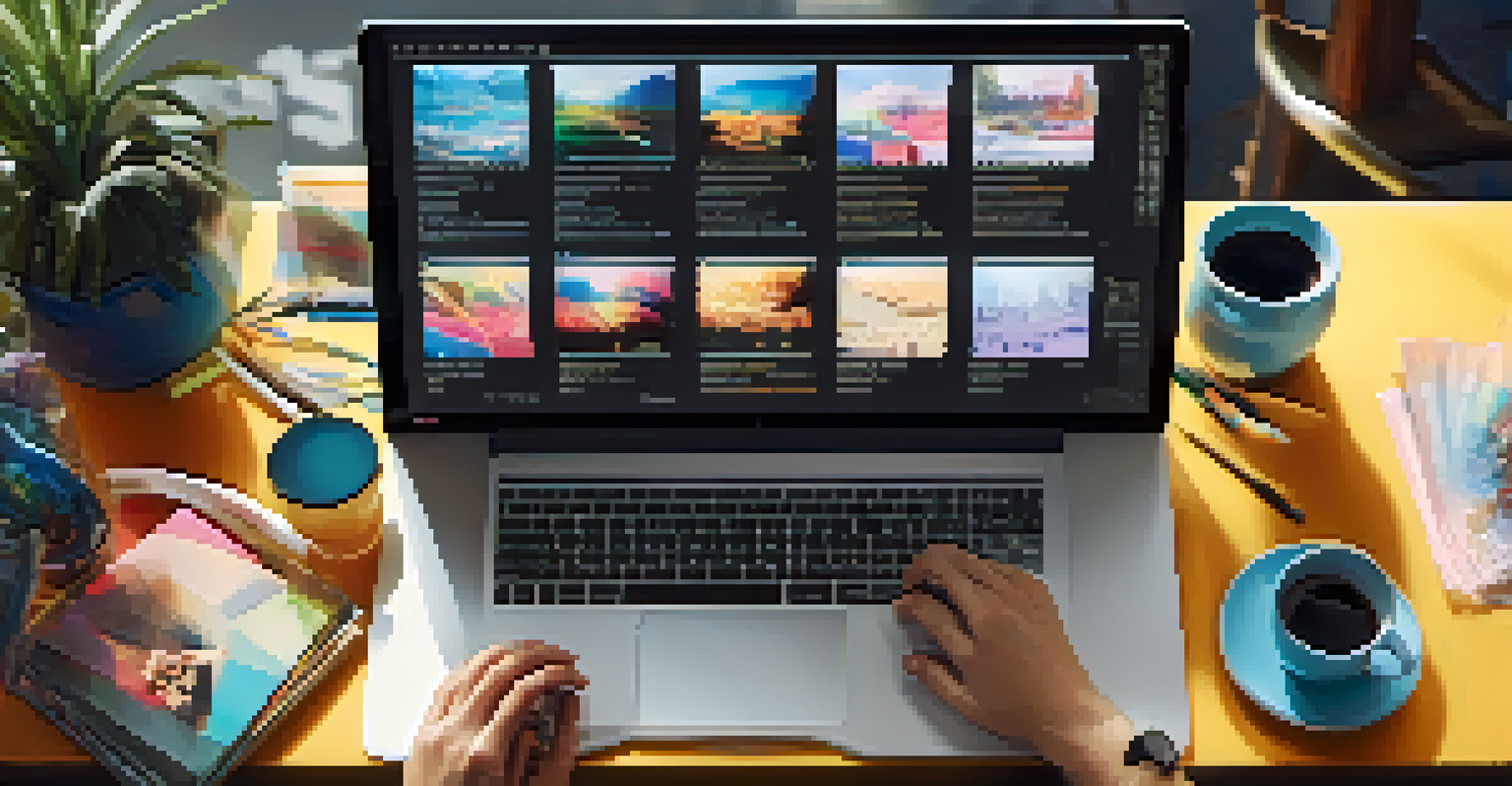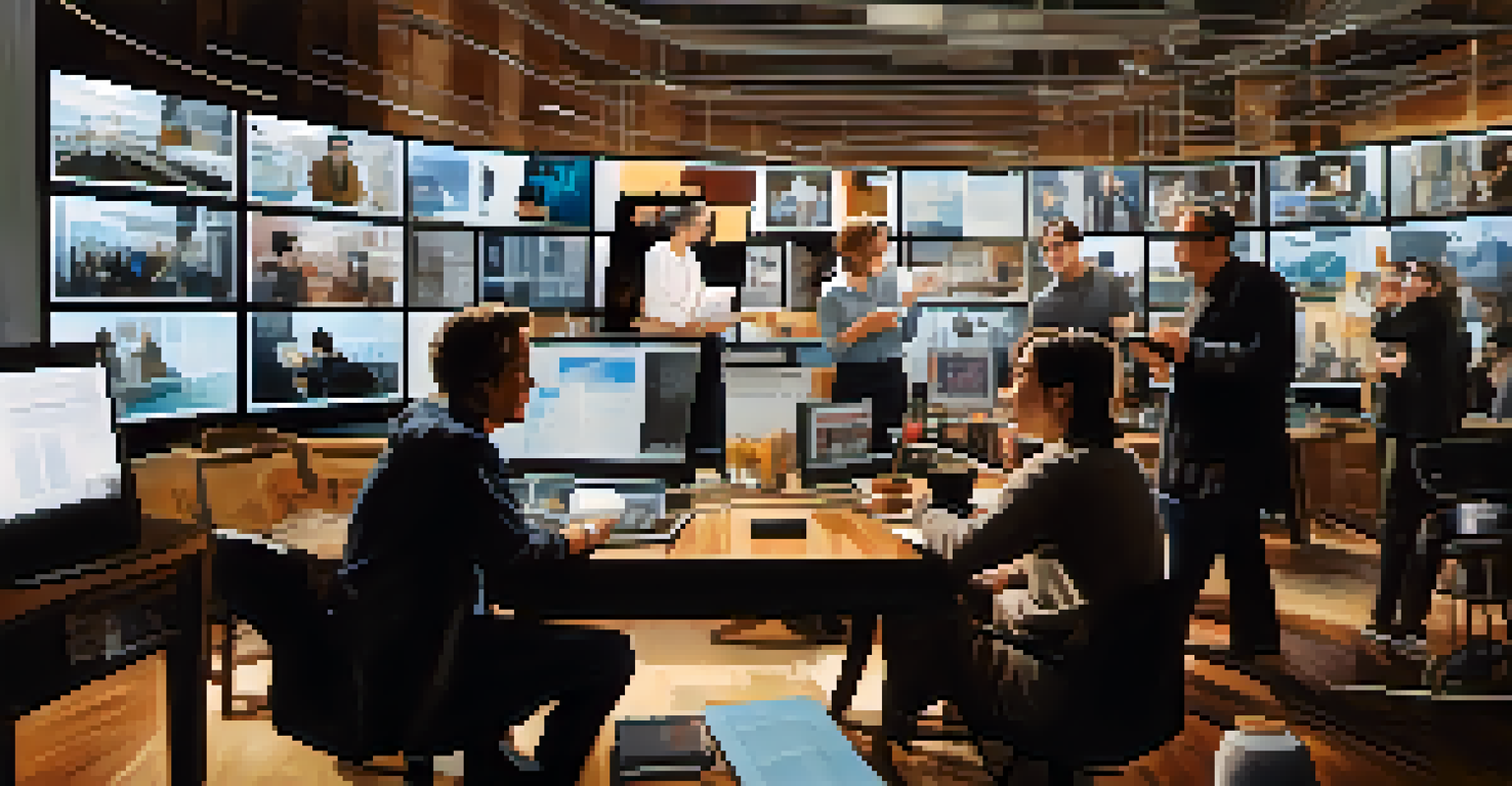Film Editing: Balancing Creativity and Technical Skills

Understanding the Role of Film Editing in Storytelling
Film editing is often described as the invisible art, shaping the narrative without stealing the spotlight. It’s the editor’s job to piece together the footage in a way that enhances the story while maintaining the audience's engagement. Good editing can transform a collection of shots into a cohesive and compelling narrative, guiding viewers through the emotional landscape of the film.
Editing is like a puzzle, and it’s the editor’s job to make sure every piece fits together seamlessly to tell a compelling story.
For example, think of editing like assembling a jigsaw puzzle where each piece represents a shot. Just as a puzzle comes to life when the pieces fit together perfectly, a film finds its rhythm through careful editing. The editor decides which scenes to highlight, which moments to slow down, and how to create tension or release, all of which significantly impacts the viewer's experience.
Ultimately, the editor serves as the bridge between the raw footage and the finished product, making critical decisions that resonate with the audience. This balance of creativity and technical skill is essential, as it allows the editor to craft a story that feels both authentic and engaging.
Creativity in Film Editing: A Visionary Approach
Creativity is at the heart of film editing. Editors are not just technicians; they are storytellers who use their artistic vision to shape the film's tone and emotional impact. They have the power to create a mood, whether it’s tension in a thriller or warmth in a romantic scene, through timing and pacing alone.

Consider the impact of a well-timed cut. An editor might choose to cut from a character's anxious face to a ticking clock, amplifying the suspense. This creative choice not only serves the narrative but also engages the audience on a deeper emotional level. Such decisions require a keen understanding of storytelling dynamics, as well as an intuitive grasp of how viewers will respond.
Editing Shapes Film Narratives
Film editing is an essential art that transforms raw footage into a compelling story, guiding the audience through emotional experiences.
Moreover, creativity in editing involves experimenting with different techniques, such as montages or non-linear storytelling. These innovative approaches can lead to fresh interpretations and unexpected connections within the film, showcasing the editor's unique voice and artistic flair.
Technical Skills: The Backbone of Effective Editing
While creativity is vital, technical skills are equally important in film editing. Editors must be proficient in various software tools and possess a solid understanding of the technical aspects of film production. Mastery of editing software like Adobe Premiere Pro or Avid Media Composer is crucial for efficiently manipulating footage and achieving desired effects.
The editor is the one who shapes the story, giving it a structure and emotional depth that resonates with the audience.
Technical skills also include knowledge of sound design, color grading, and visual effects. For instance, an editor may need to synchronize audio with visuals or enhance the film's colors to create a specific atmosphere. These skills enable editors to polish the footage and ensure a professional-looking final product that meets industry standards.
Ultimately, the technical side of editing supports the creative vision, allowing editors to bring their ideas to life. A well-rounded editor combines both creativity and technical proficiency, resulting in a seamless and captivating viewing experience.
The Editing Process: From Raw Footage to Final Cut
The editing process is a complex journey that begins with assembling raw footage. Editors sift through hours of video, selecting the best takes and moments to create a rough cut. This initial phase is crucial, as it establishes the foundation of the film and sets the tone for the subsequent editing stages.
Once the rough cut is complete, editors begin refining the film, focusing on pacing, transitions, and emotional beats. This stage often involves collaboration with directors and producers, who provide feedback and insights to shape the final cut. Editors must balance their creative instincts with the visions of others, ensuring the film aligns with its intended message.
Collaboration Enhances Editing
Effective collaboration among editors, directors, and other team members enriches the editing process, resulting in a more polished final product.
Finally, the process culminates in the final cut, where every detail is polished. This includes adding sound effects, music, and color correction, ensuring that the film not only tells a story but also resonates with the audience on multiple levels. It’s a meticulous process that highlights the importance of both creativity and technical skill in film editing.
Collaboration: The Editor's Role in a Team Environment
Film editing is rarely a solitary endeavor; it thrives on collaboration. Editors work closely with directors, cinematographers, and sound designers to create a cohesive vision. This teamwork is essential, as it allows for diverse perspectives and ideas to enhance the film's narrative.
For example, during the editing process, a director may suggest adjustments to the pacing or structure based on their vision for the film. The editor then takes these suggestions and integrates them into the cut, ensuring that every element aligns with the overall direction. This collaboration fosters a creative environment where ideas can flourish and evolve.
Moreover, effective communication is key in this collaborative process. Editors must articulate their ideas clearly and be open to feedback, fostering a productive dialogue that drives the project forward. Ultimately, this teamwork enriches the editing process and leads to a more polished and compelling final product.
Staying Current: Adapting to Evolving Industry Trends
The film industry is constantly evolving, and editors must adapt to new trends and technologies. Staying informed about the latest software updates, editing techniques, and viewer preferences is essential for maintaining a competitive edge. This adaptability allows editors to experiment with innovative styles and methods that resonate with contemporary audiences.
For instance, the rise of streaming platforms has influenced editing styles, emphasizing faster pacing and shorter scenes to cater to viewers’ shorter attention spans. Editors must be aware of these shifts and adjust their approaches accordingly, ensuring their work remains relevant and engaging.
Adaptation to New Trends
Editors must stay current with evolving industry trends and technologies to maintain relevance and engage modern audiences.
Additionally, embracing new technology, such as virtual reality and interactive storytelling, opens up exciting possibilities for editors. By exploring these emerging trends, editors can push creative boundaries and offer unique viewing experiences that captivate audiences in today's dynamic landscape.
The Future of Film Editing: Blending Art and Technology
As we look to the future, the landscape of film editing is poised for exciting changes. The integration of artificial intelligence and machine learning is beginning to influence the editing process, assisting editors in tasks like sorting through footage or suggesting edits based on patterns. This technology can streamline workflows, allowing editors to focus more on the creative aspects of their job.
However, the human touch remains irreplaceable. While technology can enhance efficiency, it cannot replicate the intuition and emotional understanding that a skilled editor brings to the table. The future of film editing will likely involve a harmonious blend of technical tools and human creativity, resulting in innovative storytelling.

Ultimately, the evolution of film editing will continue to inspire new generations of editors, encouraging them to explore the limitless possibilities of the medium. As technology advances, the art of editing will adapt, ensuring that creativity and technical skills remain at the forefront of this dynamic field.